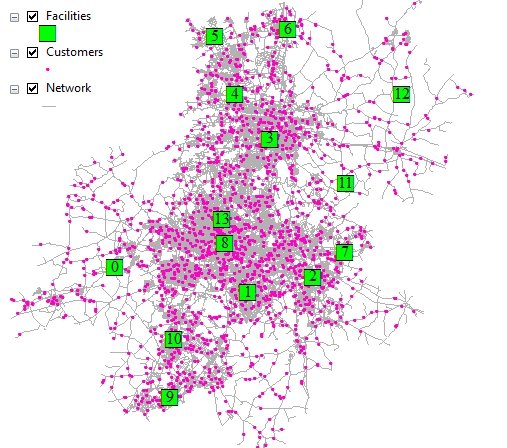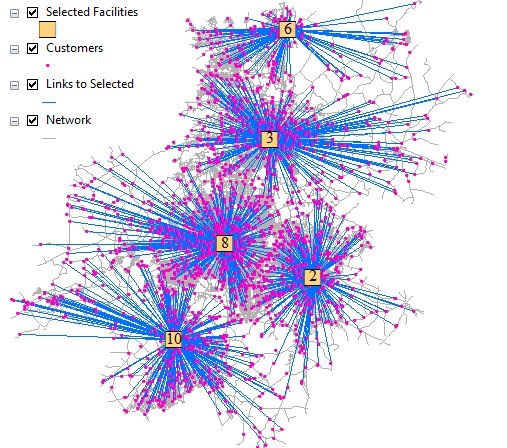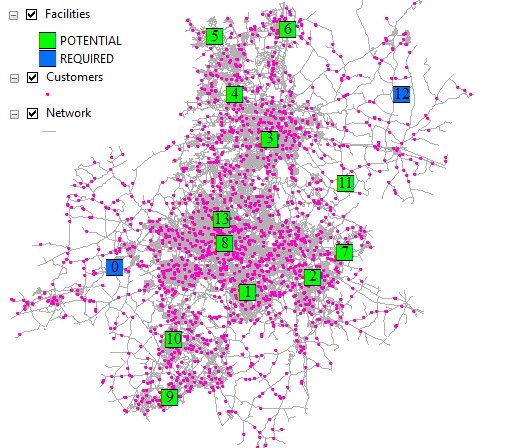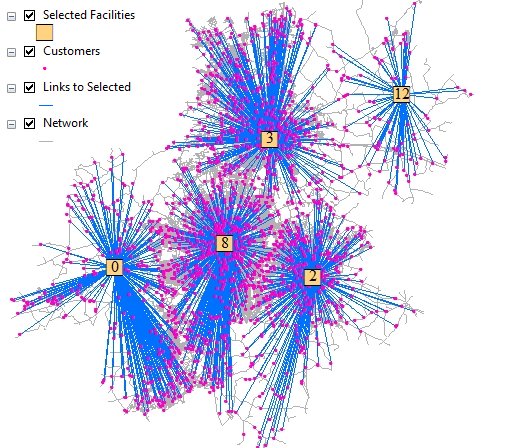| Language |
Syntax |
| Python |
subprocess.call([ETGWPath, "AllocateBasedOnNetwork","Network to Use", "facilities dataset", "customers dataset",
"out link layer", " out facilities layer", "number facilities","snap tolerance",
"Input Barrier Points", "Barriers Direction Field", "facility name field",
"facility type field","customer name field","Cutoff distance ","KeepSourceSref"]) |
| .NET using ETGWRun.exe |
StartInfo.FileName = ETGWPath
StartInfo.Arguments = "AllocateBasedOnNetwork" "Network to Use" "facilities dataset"
"customers dataset" "out link layer" "out facilities layer" "number facilities" "snap tolerance"
"Input Barrier Points" "Barriers Direction Field"
"facility name field" "facility type field" "customer name field" "Cutoff distance " "KeepSourceSref" |
| .NET using ETGWOutX.dll |
AllocateBasedOnNetwork(Network to Use,facilities dataset,customers dataset, out link layer,out facilities layer, number facilities,snap tolerance,
Input Barrier Points, Barriers Direction Field, facility name field,
facility type field, customer name field, Cutoff distance KeepSourceSref) |
| ArcPy |
arcpy.AllocateBasedOnNetwork(Network to Use,facilities dataset,customers dataset, out link layer,out facilities layer, number facilities,snap tolerance,
Input Barrier Points, Barriers Direction Field, facility name field,
facility type field, customer name field, Cutoff distance KeepSourceSref) |




